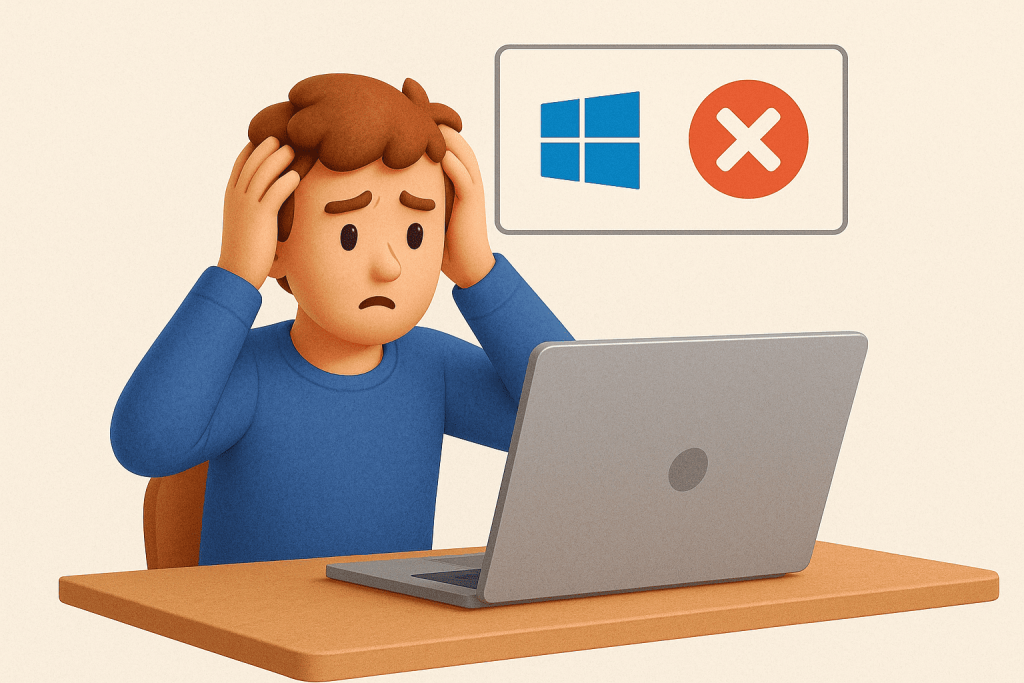
Less than a month remains until Microsoft officially ends support for Windows 10. On October 14, 2025, this popular operating system will receive its last security update, after which no new patches or fixes will be released. In other words, Windows 10 officially moves into the category of legacy products. In this article on Server.UA, we explain what the end of Windows 10 support means for everyday users, why Microsoft is taking this step, and recall the interesting historical context behind this decision.
End of Support: What It Means and When It Happens
The term “end of support” means that from a specified date, Microsoft will no longer provide technical assistance, software updates, or security updates for the product. For Windows 10, that date is October 14, 2025 – after this, there will be no more free updates. The October 2025 patch release will be the final one for Windows 10. It’s important to note that this is a planned step: the typical lifecycle of Windows versions lasts about 10 years. Windows 10 was released in 2015, and about a decade later – as expected – its official support is ending. For example, Windows 7 also received updates for over 10 years, and its support was finally discontinued in January 2020. Thus, Windows 10 has reached the end of its defined life within Microsoft’s supported product ecosystem.
What Risks Do Windows 10 Users Face After October 2025?
Of course, on October 15, 2025, your Windows 10 computer won’t suddenly shut down – the system will keep working. However, the end of support brings several significant drawbacks for users. Here are the main ones:
- No security updates. Over time, Windows 10 will become increasingly vulnerable to new viruses and cyberattacks, since critical vulnerabilities will no longer be patched. Your PC will continue to run, but the risk of infection by malware will steadily rise.
- Software and hardware compatibility. Developers will gradually stop supporting the outdated OS. New versions of applications and drivers may not work on Windows 10, which will no longer receive feature updates. In a few years, even some popular programs (such as new releases of Office) may stop being fully compatible with Windows 10.
- No official support. After the lifecycle ends, Windows 10 users will no longer be able to count on support from Microsoft. In case of issues or system failures, there will be no service assistance or bug fixes from the developer.
It’s worth noting that Windows 10 is still installed on a huge number of PCs. As of mid-2025, roughly half of all Windows users worldwide were still running Windows 10. This means millions of people will be left without up-to-date protection, making cybersecurity a pressing concern. If you’re in this category, it’s time to start considering a move to a more modern system.
Windows 10 in Retrospect: From “The Last Windows” to the End of an Era
Windows 10 was a landmark release. It combined the best of Windows 7 with innovations from Windows 8 and quickly became popular. In 2015, when it was introduced, a Microsoft representative even claimed it would be “the last version of Windows” – suggesting the OS would evolve as a service rather than through new numbered releases. This approach was called Windows as a Service, and for a while, Windows 10 was indeed regularly updated without a name change. However, reality soon intervened: in 2021, Windows 11 was launched, giving Windows 10 both a successor and a formal end to its support cycle.
During its lifespan, Windows 10 became one of Microsoft’s most successful operating systems. Within just a few years, it was installed on over 1 billion devices worldwide. It remained the most widely used desktop OS up to 2025. But, as with all previous generations, time moves on. Once-dominant Windows XP eventually “retired” in 2014, and Windows 7 followed in 2020. Now, it’s Windows 10’s turn to step aside and make way for new solutions.
What’s Next for Windows 10 Users?
Sooner or later, every Windows 10 user will have to decide what to do next. Microsoft’s official recommendation is to upgrade to Windows 11, offered as a free update for compatible PCs. If your device meets the system requirements, you can install Windows 11 and continue receiving regular updates. For those whose PCs can’t run the new OS, Microsoft has for the first time introduced Extended Security Updates (ESU) – a program offering critical security patches for Windows 10 for one additional year beyond October 2025 (a paid option for home users). Still, this is only a temporary measure – essentially delaying the inevitable migration to a newer platform.
In conclusion, the end of Windows 10 support is not a disaster, but rather a natural stage in the evolution of software. What matters is that users prepare in advance to safeguard their data and maintain a smooth working environment. Server.UA will continue monitoring updates and providing guidance to make your transition into the new Windows era as safe and seamless as possible. We wish you a pleasant and successful upgrade!

Leave a Reply